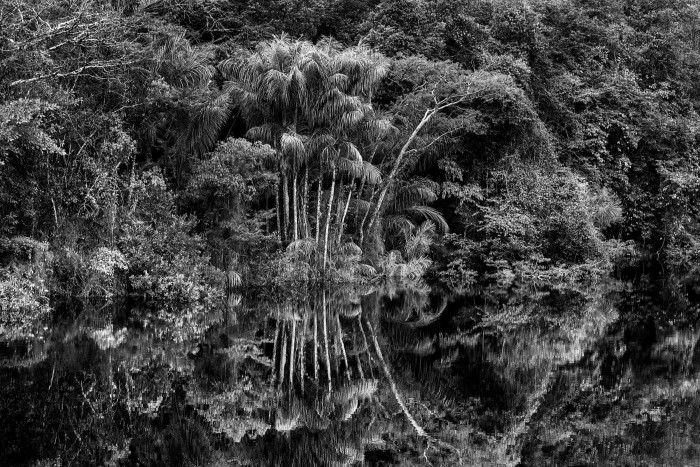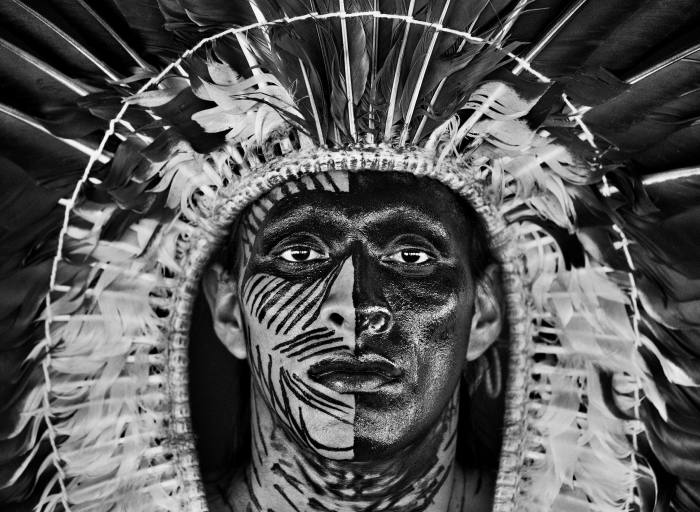Photographer Sebastião Salgado on why the Amazon is under threat

As far as Brazilian photographer Sebastião Salgado is concerned, you don’t need to look to Mars or the far reaches of our galaxy if you want to find extraterrestrial life: try London, Paris or New York.
“We are kind of aliens in our planet,” he says. “We don’t know about the planet.” Most people, he thinks, have no real appreciation of the crisis conditions caused by climate change, but the Amazon tribes in his expansive greyscale photos, “the guys that are in the soil, they’re learning the planet. They are suffering very, very hard from this change of temperature.”
Salgado, 77, made his name in the 1980s with his Serra Pelada series, photographs of workers at a Brazilian gold mine — sinewy, abused, defiant — in silvery tones almost indistinguishable from the harsh landscape they occupy. But since then his lens has ranged more widely, drawing attention to our planet’s environmental situation, and he is probably best known for his 2013 show and book Genesis, a global survey of animals, land- and seascapes and indigenous peoples, a warning of what is at stake.
Today he is speaking over Zoom from Paris, where his exhibition Amazônia, based on pictures taken during seven years spent in the Brazilian Amazon, is at the Philharmonie de Paris before travelling to London’s Science Museum (open now until March 2022). In one, moisture-laden winds roll over Mount Roraima on the Brazil-Guyana border, a great abstract wash; in another, a man, Adão Yawanawá, wearing glistening face paint and a headdress of eagle feathers, looks directly at you.

We’ve been joined on the call by Kath Castillo, a field biologist and botanist who is now a researcher at the Natural History Museum, who I’ve invited for her scientific perspective.
Salgado isn’t immediately keen on the description of his photographs as a warning. “They are not made to be warning pictures,” he says amiably. “I went there because I wished to go there because it is my way of life to do pictures . . . But after a while, Amazonia became a reference in discussion, a reference in debates. We are seeing how quickly we are hitting this planet and the Amazonia . . . And now [the pictures] have become a kind of warning.”
Castillo suggests that these pictures can act as information, as data. In her work, which has included discovering an orchid in Costa Rica now named after her, she has taken photographs over time as an aide-memoire, including portraits at meaningful moments, but these also function as “units of data for research . . . When you combine them, you can analyse certain things that the photograph is depicting — environmental change, climate change.”

When Castillo asks Salgado whether photography can fight climate change, he picks up her line of thinking. “I don’t believe that my pictures alone can change anything. But together with the pictures of other photographers, with the filmmakers, with the writers, with the full information, we create a flow of information and we are a part of it.”
While the work Salgado is showing in Amazônia is peaceful and untroubled, he has had a second show in Paris called Blessure (“Injury”), at L’espace Frans Krajcberg, with pictures of the destroyed Amazon. Salgado himself is conscious of this destruction because, together with his wife and collaborator Lélia Wanick Salgado, he has reforested more than 600 hectares in Brazil through their Instituto Terra project, with an emphasis on biodiversity rather than monoculture. Thanks to climate change, he says, rainfall is down to a quarter of its previous long-term level; reforestation improves the water supply for local farmers.

Salgado is frank when it comes to the anti-environmental rule of President Jair Bolsonaro. Substantial chunks of the Amazon are protected or administered by two government organisations, he says, in one of which Bolsonaro installed not a scientist but a former police officer with connections to agribusiness. The president is not interested in conservation: Bolsonaro “took all these guys that controlled the Amazon out. Amazon has no more control. It’s because he did that we have so many fires in the Amazon — the farmers are burning like they want because there are no penalties for them.” (Salgado points out that in the last two decades before Bolsonaro, “we lost 8 per cent of the Amazonia”.)
Bolsonaro’s rule has also made it harder for Salgado and those like him to gain access to remote areas of the Amazon to record fires, logging and more. Previously, Salgado had arranged with the Brazilian army for “tens of trips in their planes, in their helicopters”, using this unprecedented aerial access to shoot out of the window or through an open door. “Bolsonaro was not yet working with his machine . . . And after the Bolsonaro machine started to be in place, they started to cut all the authorisations.”

Bigger than Bolsonaro are global efforts to fight climate change, such as at the COP26 climate change conference in Glasgow, Scotland, which opens on October 31, but neither Salgado nor Castillo is hopeful. Castillo says: “We have to try and be optimistic. But I’m not. I feel there’ve been so many attempts before. And they have had no teeth at all. Nothing has really come of it . . . When it comes down to it, we would have to sacrifice a huge amount in order to save the planet. And are human beings really capable of doing that?”
Salgado is similarly disaffected, blaming part of the destruction of the Amazon on western nations’ demand for wood, cattle and soyabeans to fatten up animals. But his answer is in some ways philosophical, saying that if the human lifespan were one or two millennia, “we’d understand very well our problems, our planet. We’d be adapting to another way in the planet. But we have no time, you see?”
And ultimately, it is humans who will suffer most: “We must get a way to go back at least spiritually to the planet. The contrary will be very complicated for our species. The planet is not in danger. The planet after us will [regenerate] very, very fast . . . But the danger is for our species, because we are on the edge of the end of our species.”
‘Amazônia’ runs at the Science Museum, London, until March 2022; sciencemuseum.org.uk
Follow @ftweekend on Twitter to find out about our latest stories first